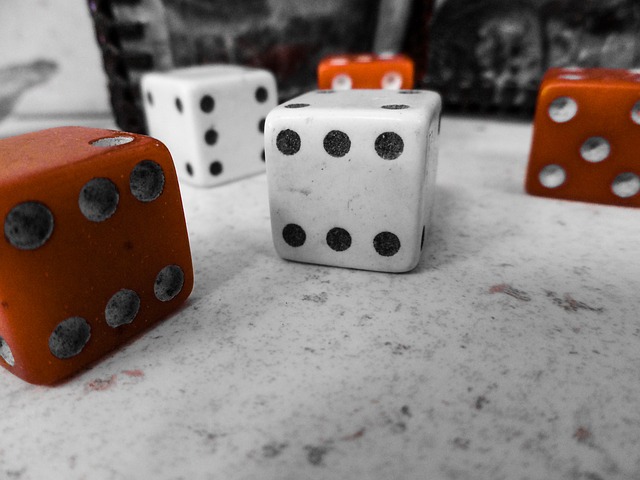Learning OUTCOMES
- Theoretical Probability
- Empirical Probability
- Describe a sample space, outcome, simple and compound events in it using standard notation
- Calculate the probability of an event using standard notation
Learning new Math vocabulary and notation
You’ve seen before that learning mathematics is similar to learning a new language — it takes repetition and practice to obtain new vocabulary and symbols. Probability is no different. The set of vocabulary and symbols used in probability will likely be completely unfamiliar to you unless you’ve studied probability before. Remember to read the text with your pencil, writing out the terms, definitions, and practice problems multiple times in order to learn them. You’ll need to spend time with these new ways of thinking to make them your own.
If you roll a die, pick a card from a deck of playing cards, or randomly select a person and observe their hair color, we are executing an experiment. In probability, we look at the likelihood of different outcomes.

We begin with some terminology.
Theoretical Probability
Empirical Probability
- a probability that is based on the result of an experiment
Event, Outcome, and Sample SPace
- The result of an experiment is called an outcome.
If you flip one fair coin, H = heads and T = tails are the outcomes
- An event is any particular outcome or group of outcomes.
If you roll one fair six-sided die, the event might be getting an even number on the die. The probability of this occurring would be written as P(an even number).
- The sample space is the set of all possible outcomes.
If you roll one fair six-sided die, the sample space is S = {1, 2, 3, 4, 5, 6}.
Example – Theoretical Probability
A bag contains three  red marbles and three blue marbles.
red marbles and three blue marbles.
P(red) = 3/6 =1/2
(The result is based on the possible outcomes therefore this is Theoretical Probability)
Example – Empirical
One hundred consumers were asked the reason for choosing a particular car. The responses were recorded below:
| Reason | Frequency |
| Looks | 24 |
| Reliability | 17 |
| Cost | 49 |
| Safety | 10 |
- Find the probability that a person chooses a car for cost reasons
P(cost) = 49/100 = 0.490
(The result is based on an experiment, therefore this is Empirical Probability)
example
If we roll a standard 6-sided die, describe the sample space and some simple events.
This is the end of the section. Close this tab and proceed to the corresponding assignment.
Candela Citations
- Revision and Adaptation. Provided by: Lumen Learning. License: CC BY: Attribution
- Math in Society. Authored by: Open Textbook Store, Transition Math Project, and the Open Course Library. Located at: http://www.opentextbookstore.com/mathinsociety/. License: CC BY-SA: Attribution-ShareAlike
- dice-die-probability-fortune-luck. Authored by: jodylehigh. Located at: https://pixabay.com/en/dice-die-probability-fortune-luck-219263/. License: CC0: No Rights Reserved
- Basics of Probability - events and outcomes. Authored by: OCLPhase2's channel. Located at: https://youtu.be/37P01dt0zsE. License: CC BY: Attribution
- Basic Probabilities. Authored by: OCLPhase2's channel. Located at: https://youtu.be/EBqj_R3dzd4. License: CC BY: Attribution
- Question ID 7130. Authored by: WebWork-Rochester, mb Lippman,David. License: CC BY: Attribution. License Terms: IMathAS Community License CC-BY + GPL


